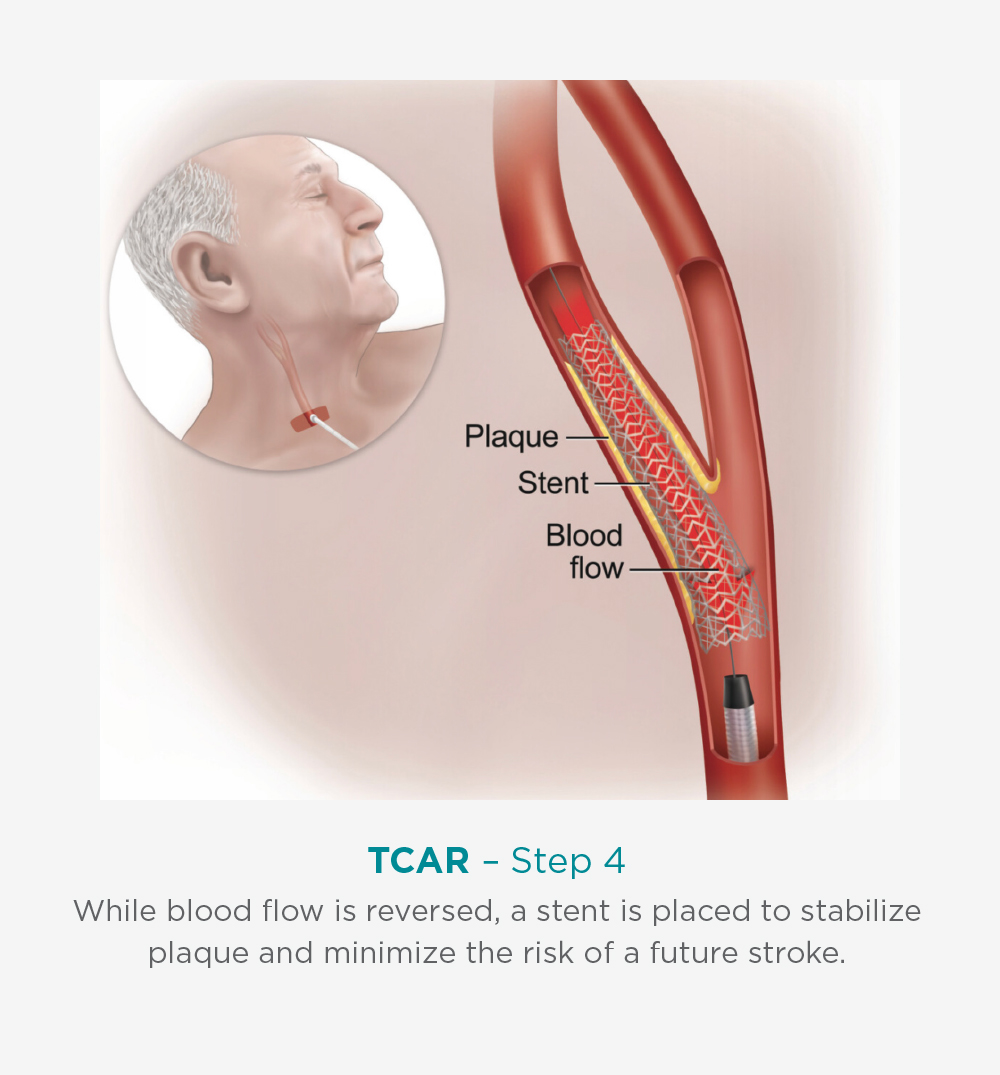TransCarotid Artery Revascularization (TCAR)
Metropolitan Heart and Vascular Institute now offers a state-of-the-art technology called TransCarotid Artery Revascularization (TCAR) to treat patients with carotid artery disease.
While any treatment or repair of the carotid artery carries some risk of causing a stroke, TCAR was designed to help lower that risk by keeping potential stroke causing plaque or fatty debris away from the brain. Like carotid endarterectomy (CEA), this innovative procedure involves direct access to the carotid artery but through a much smaller side-to-side incision at the neckline just above the collar bone instead of a larger up-and-down incision on the neck with CEA.
During the TCAR procedure, a tube is inserted into the carotid artery and is connected to a system that temporarily directs blood flow away from the brain. This creates protection against dangerous debris from reaching the brain. The blood is filtered to ensure it is safe and is then returned to the body. Once this system is in place, the carotid artery is stretched with a balloon and then a stent is implanted directly into the carotid artery to stabilize the plaque, open the vessel, and prevent future strokes.
- The procedure is performed in about half the time of CEA
- Limits stress on the heart
- Significantly reducing the risk of the patient having a heart attack or cranial nerve damage
- Recover quickly (typically spending just one night in the hospital) and almost always go home the next day
- Smaller scars
- Reduced risk of future strokes
Your physician may recommend the TCAR procedure if you have been diagnosed with carotid artery disease.
If you are 65 years of age or older and meet the TCAR criteria, you can discuss with your physician which treatment approach is best for you.
For more information about TCAR, call us to schedule a consultation with one of our vascular surgeons.
TCAR Proceduralists
Learn more about the TCAR procedure with this educational video.
As part of the TCAR procedure, a stent is placed in the carotid artery to open up the blockage or narrowing, while the catheter sucks blood and debris away to protect the brain from a stroke.


